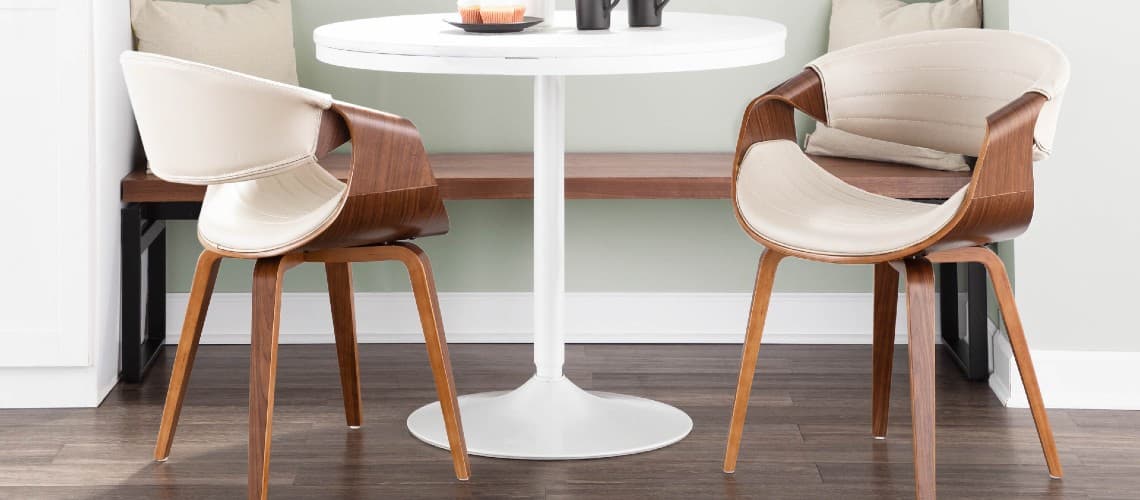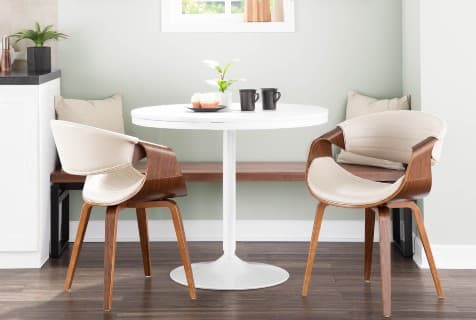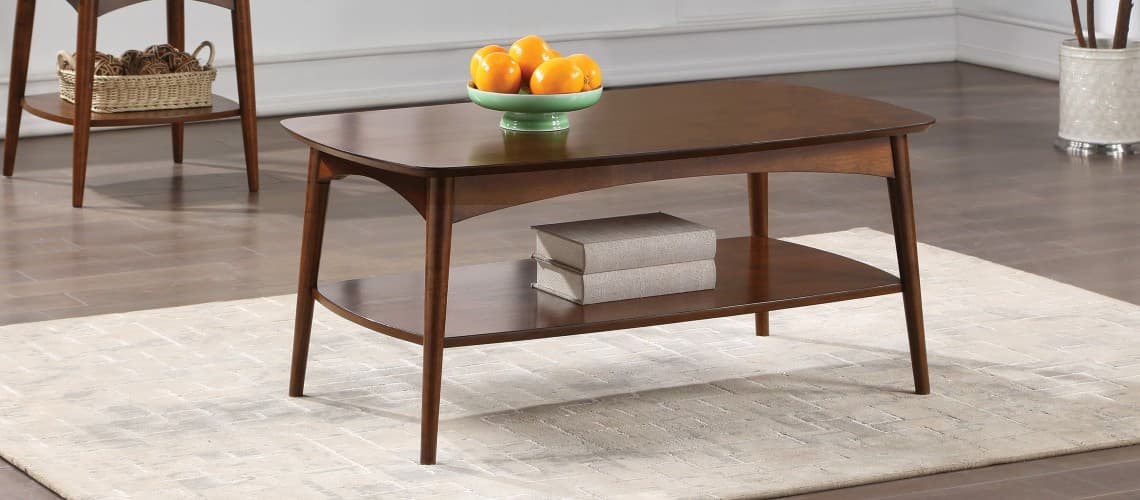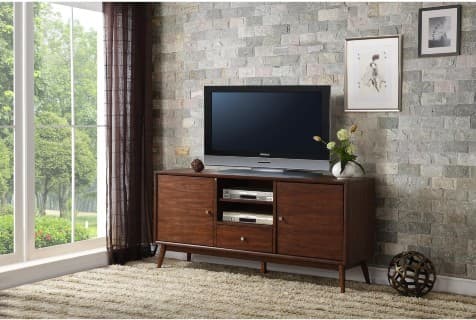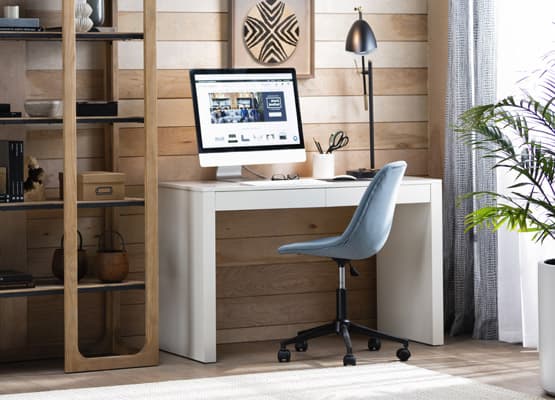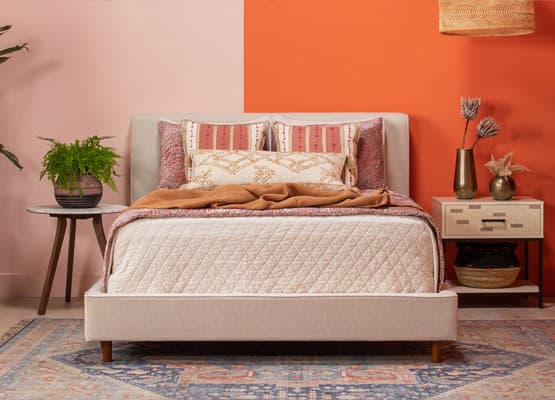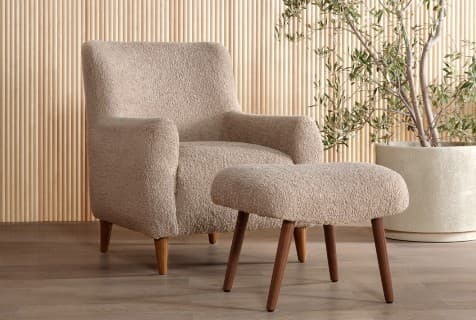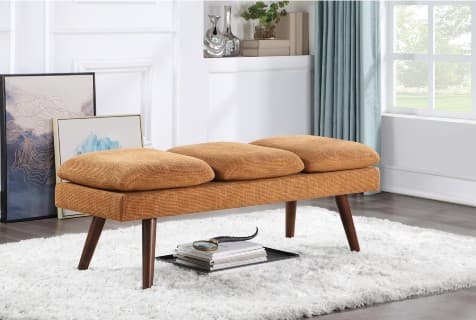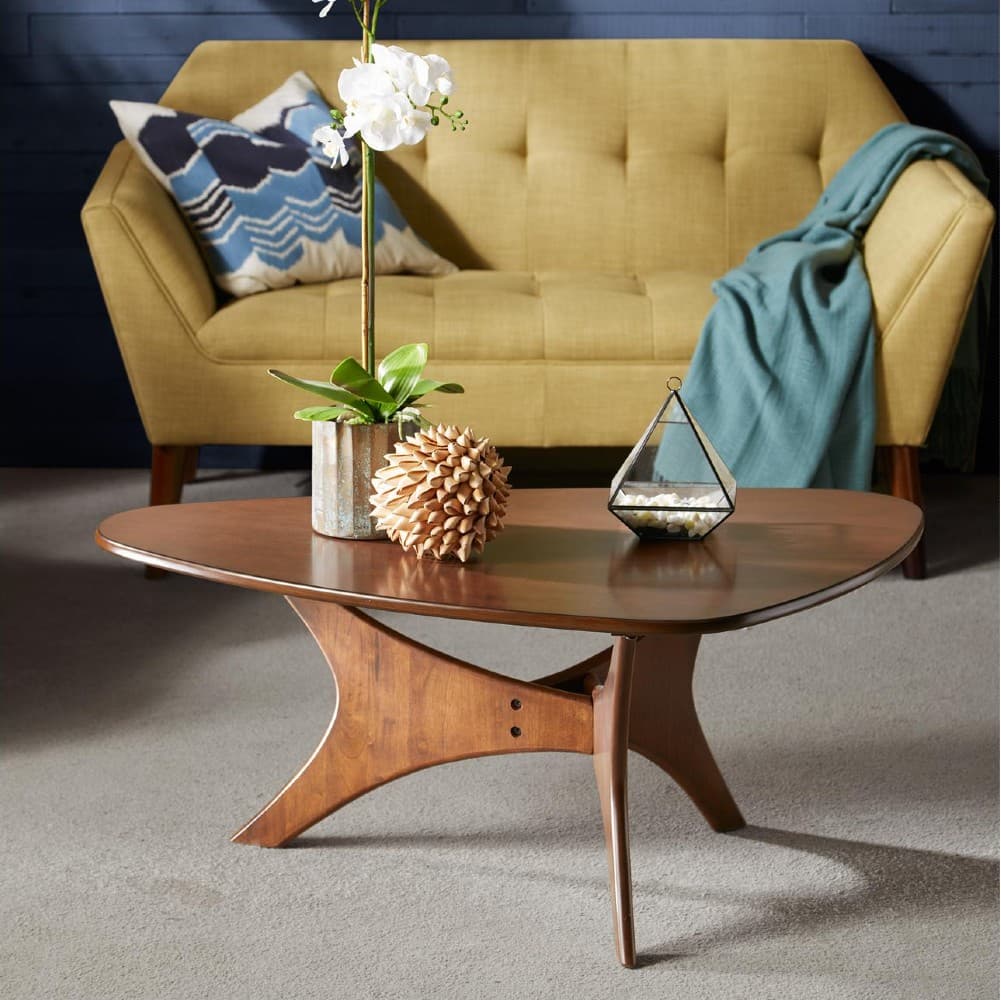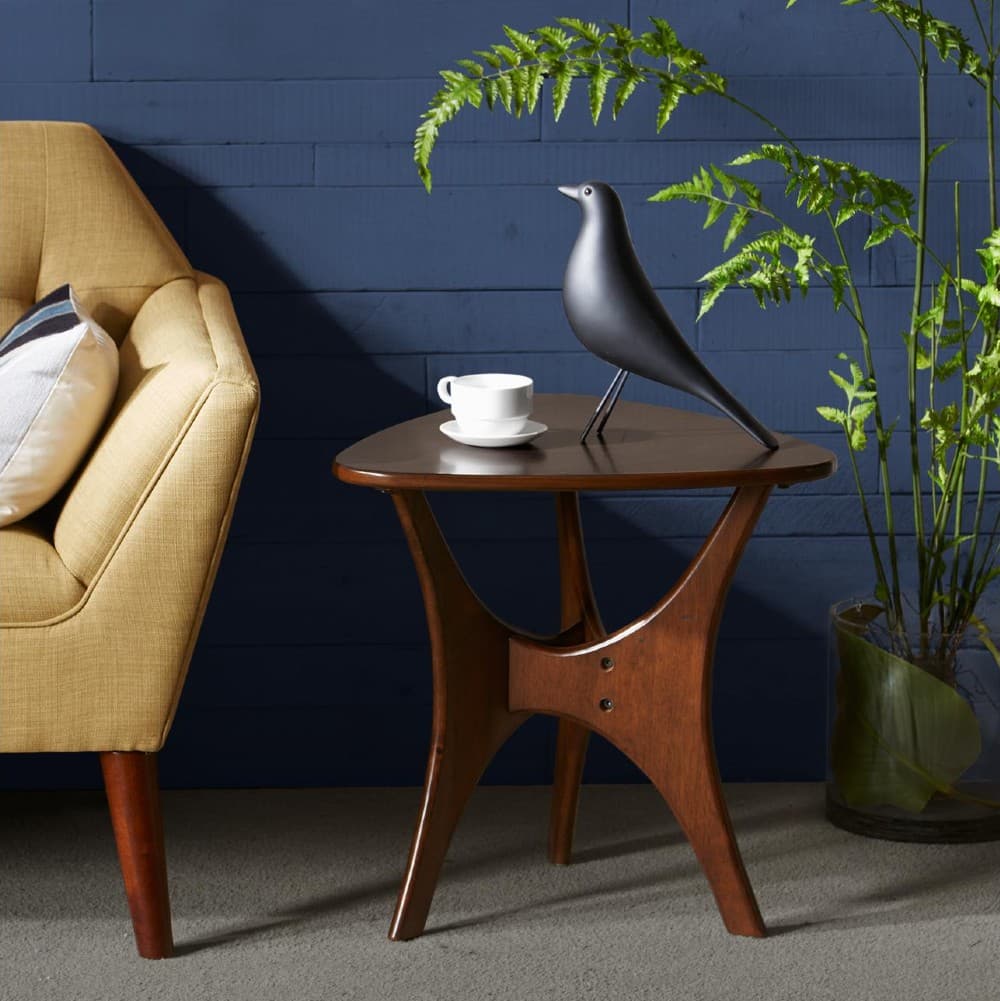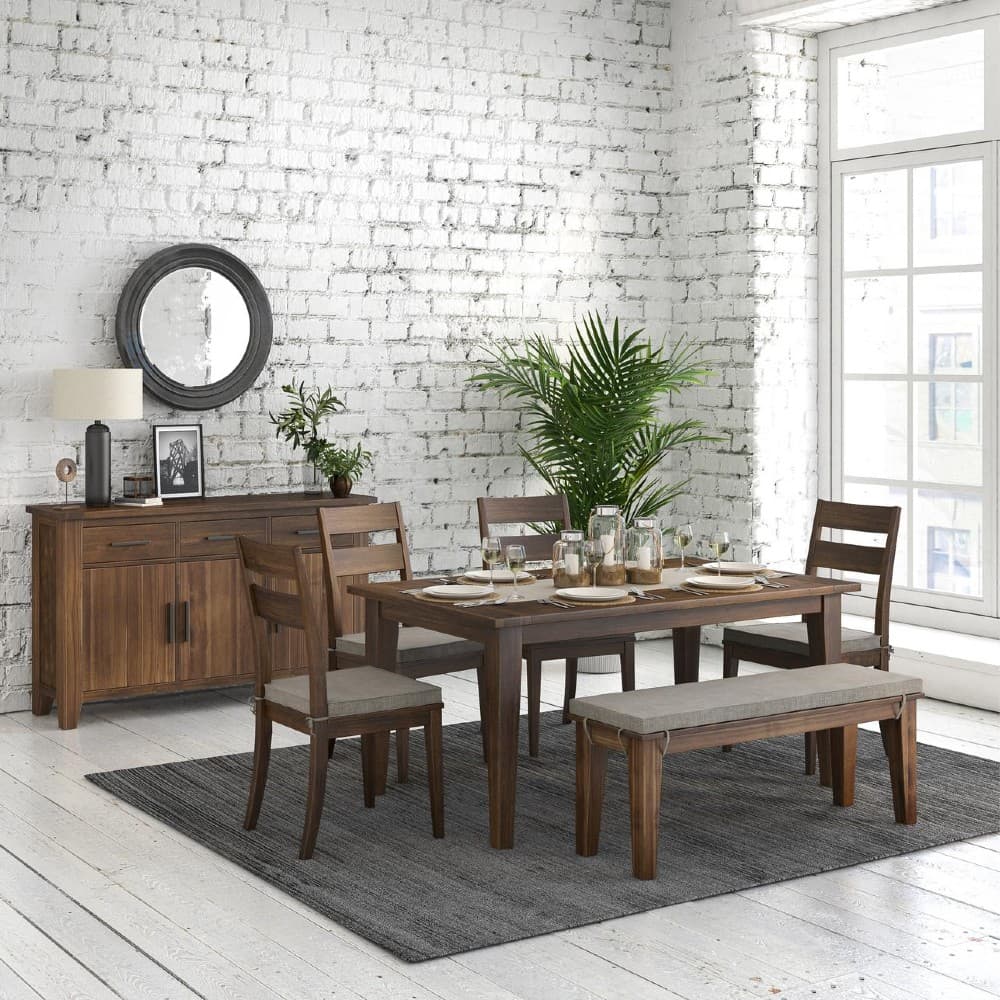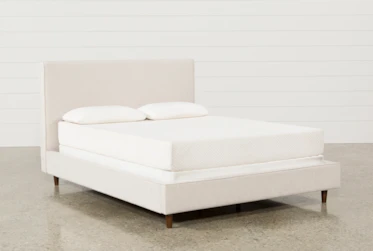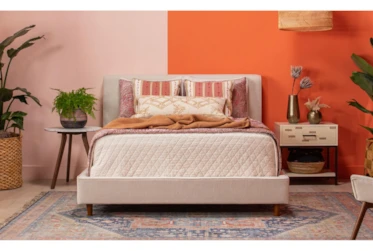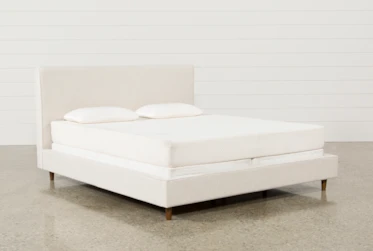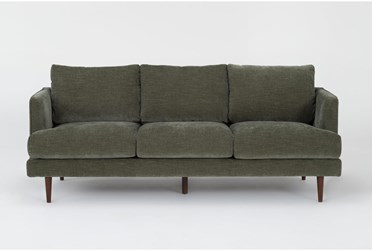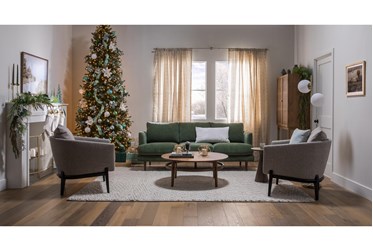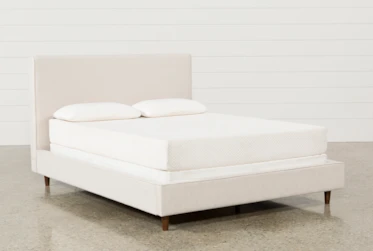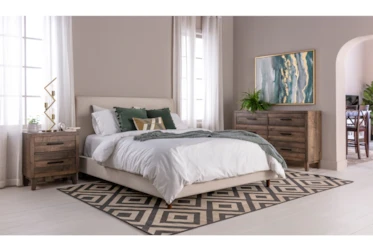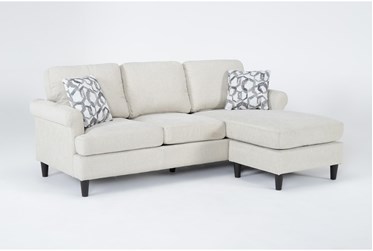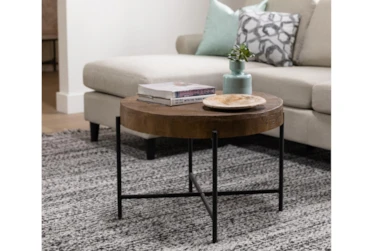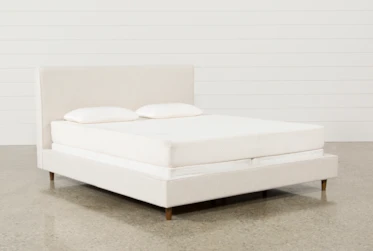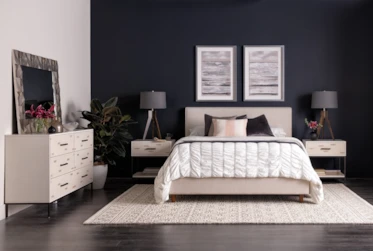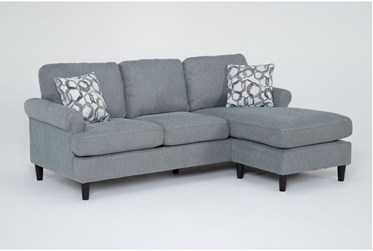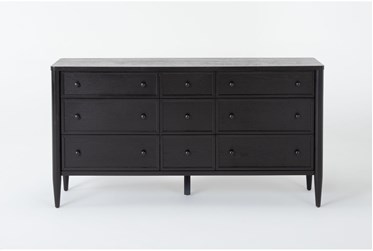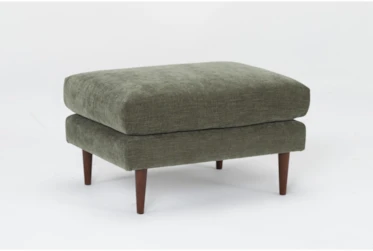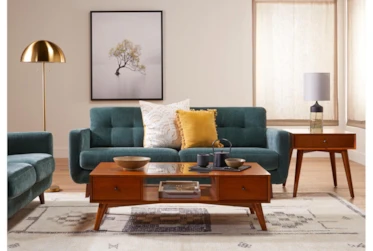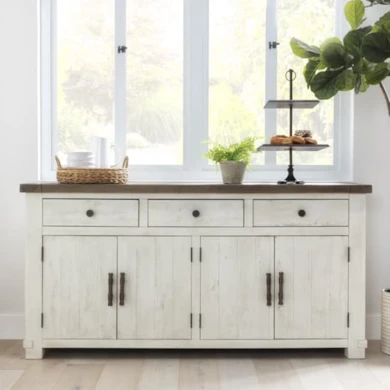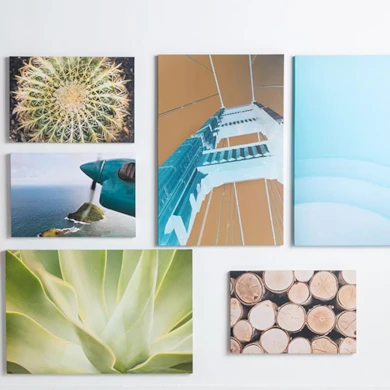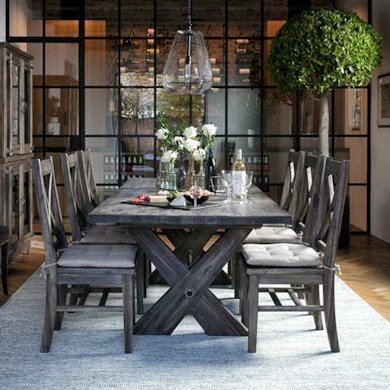What Is Mid-Century Modern Style?
It's not unusual for styles from another era to make a comeback, and this is certainly true of mid-century modern. (It's not just a feeling: searches for "mid-century style" on Google Trends has grown in interest by three percent over the past year.) Learn where this iconic style came from and why it's still so influential in home design.
The Origins of Mid-Century Modern
The century referred to in mid-century modern is the 20th, specifically the years immediately following the Second World War, from the mid-1940s to the late 1960s. During this time, North America enjoyed a booming real estate economy and a booming population.
With WWII over and so many young families buying and furnishing their first homes, suburbs grew with newly constructed homes that reflected new building and graphic design techniques and the populace's desire for features that reflected their optimistic outlook.
3 Distinguishing Features of Mid-Century Modern
- 1. Chair: Flared blacks, tapered legs and pops of color keep the vibe clean and simple
- 2. Lamp: IN the 50s and 60s, bold shapes like domes, and materials like sleek chrome, gave a futuristic feel - providing stark contrast to the elaborate traditional style of the 20s and 30s.
- 3. TV Stand: Function takes over form with minimalistic, geometric designs.
The elements of Mid-century modern
Mid-Century modern is understated
People wanted to put the war years behind them, and they embraced the new and modern. Gone were the overstuffed, overfilled rooms they grew up in, replaced by decor with clean lines and minimal fuss.
Forms are organic and geometric
Houses with lots of windows invite the outside in, and mid-century modern style reflected this in organic and geometric patterns. Natural materials like wood, metal and leather were in demand. Bold patterns brought visual focus to lean, uncomplicated rooms.
Functionality is paramount
Floor plans were designed so that every room had a purpose and anything unnecessary was omitted. Multipurpose furniture was sought after because it conserved space. Retro MCM furniture pieces stacked, folded or nested.
Materials are used in unexpected ways
This was the period when new materials like plexiglass and fiberglass found their way into home furnishings. Fiberglass and plywood were molded and bent to fit the curve of the body. Tubular steel and leather strapping were used to create comfortable cantilevered chairs. Plexiglass was formed into clear organic shapes such as coffee and end tables and floor lamps.
Outside Influences
The influence of American design on Scandinavian and vice versa, though gradual and lacking a concrete “point” at which it came about, is undeniable. While each carries its own spin on modernism (Scandinavian, in particular, favoring brighter colors and lighting and American favoring a darker palette). The two, however, also share an abundance of similarities – from warm tones, modular lines and “futuristic” materials like plastic and steel.
Even the Architecture Reflects It
Mid-century modern style wasn’t – and isn’t – limited to home decor. Not only is it found in the design of the homes themselves, it also plays a crucial role in the history of American architecture. (It is often considered that architecture came first – and the decor and design trends followed.) Homes everywhere were being built with lower roofs, bigger windows and more open floor plans – influencing and being influenced by the sleek, practical furniture designs within them.
Ranch Fever
How to Use Mid-Century Modern Style in Your Space
Why Mid-Century Modern Is Still Popular Today
Today, people move more frequently than in the past and often live in small urban condos or apartments. Brynna Evans, Living Spaces interior designer, emphasizes the sleekness of the look. "The clean lines," she says, "organic curves, mix-and-match materials and multifunctional designs of mid-century modern are the perfect match for this lifestyle. These simple, well-designed objects are timeless, and they still feel fresh."
The Furniture
While you can seek out authentic mid-century modern pieces, it isn't necessary to spend tons of money to get this look. Current manufacturers have adapted the most sought-after mid-century modern furniture and design elements to suit contemporary life by updating fabric and material, and new manufacturing techniques help make these pieces very affordable. Look for sectionals, sideboards and other furniture pieces that has geometric, curving lines and multiple uses.
The Colors
Midcentury modern colors were often bright or saturated and emphasized certain design elements. These colors aren't as popular today, but you can still achieve this look by tempering one colorful statement piece with more neutral or muted colors.
The key to bringing midcentury modern style into your home is not trying to replicate it exactly. This will only look outdated. Start with basic, iconic midcentury modern side tables, table lamps or a sectional, and work out from there. Avoid clutter and, instead, embrace negative space.
4 Ways to Bring Mid-Century Modern Decor Home
A Futuristic Look
Rooted in Palm Springs
Stuck in the Middle
How Mid-Century Compares to Styles of the 1800s and 2000s
|
|
Also Known As |
Key Elements |
|
1880 – 1930 |
Victorian |
Opulence, plush textures, wrought-iron lighting |
|
1930-1970 |
Mid-Century |
Warm colors, minimalist, function over form, tapered legs, Danish inspired, Bauhaus inspired |
|
1970-2020 |
Contemporary |
Neutral colors, soft lines + comfy textures, natural elements |
Any book on modern design worth its salt will have a section – or, more likely, four or five – dedicated to mid-century modernism. After all, the style defined one of the most aesthetically iconic eras in American history. It also reflected an entire generation’s discouragement for a war-torn past, pragmatism for the present and optimism for the future. In a way, it embraces the American spirit at its finest, which is perhaps why it continues to reign dominant, and will always be considered (by us, at least!) one of the most timeless looks, ever.
Mid-Century Modern Designs
Read the Latest
Editorial Disclaimer: Articles featuring tips and advice are intended for educational purposes and only as general recommendations. Always practice personal discretion when using and caring for furniture, decor and related items.
